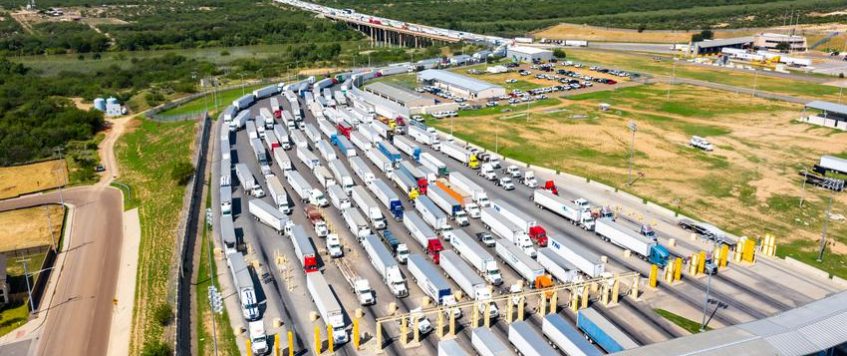-
03
Oct
Texas Truck Inspection Stall U.S.-Mexico Trade and Economy
In recent weeks, state-run cargo truck inspections initiated by Texas Governor Greg Abbott have significantly impacted trade flows between the United States and Mexico. Starting on September 20, these additional inspections were introduced as a measure to prevent drug smuggling, overseen by the Texas Department of Public Safety (DPS). The inspections are supplementary to the standard checks conducted by U.S. Customs and Border Protection (CBP). While security at the border is a legitimate concern, the repercussions of these new inspections have raised alarms among trade officials and industrial leaders on both sides of the border.
For the past month commercial traffic flow has slowed drastically since the inspections began. Notably, the number of trucks crossing daily at Eagle Pass has reduced from about 850 to fewer than 400. Furthermore, due to an influx of migrants in the area and the consequent reassignment of CBP personnel to immigration duties, the port of entry’s Bridge I, primarily used for passenger vehicles, has been closed. All vehicles must now use Bridge 2, also known as the Camino Real Bridge, creating further congestion.
The situation has not only hampered local infrastructure but also disrupted international supply chains. Trade officials in Juarez, Mexico, such as Thor Salayandia, the president of the Juarez Chamber of Industry and Manufacturing, have accused Governor Abbott of exploiting the immigration issue for inspections that have moved beyond the scope of locating migrants. Juarez is an industrial city with over 300 maquiladoras—foreign-owned factories primarily engaged in exporting goods. These plants often coordinate their activities through the El Paso port of entry, and the delays have led to severe consequences. Bombardier Recreational Products (BRP), a Canada-based company, suspended its operations at its three plants in Juarez last week due to these disruptions.
An analysis by Manuel Sotelo, vice president of the Juarez chapter of Mexico’s National Chamber of Freight Transport (Canacar), quantifies the economic impact. According to Sotelo, the hold-ups have led to more than $1.5 billion in goods being stranded at the border. Specifically, between 10,000 and 11,000 loads are currently unable to cross, with each load valued at approximately $135,000. This not only represents an immediate economic setback but also has the potential to create long-term ripple effects on the economies of both nations.
To address the crisis, a multipronged approach could be effective. One potential solution would be to allocate more staff to customs duties, allowing CBP personnel to focus on immigration-related responsibilities. This, however, would necessitate federal intervention and may not provide immediate relief. Advanced scanning technology, such as non-intrusive inspection (NII) systems, could be another route (source). This would accelerate the inspection process but requires significant investment and implementation time. Opening diplomatic channels for dialogue between U.S. and Mexican officials could lead to temporary measures like fast lanes for pre-vetted cargo. Public-private partnerships, where companies financially impacted by the delays collaborate with government agencies, could also be a promising avenue for tailored solutions (source).
The ongoing DPS inspections, while aimed at enhancing border security, have inadvertently created a myriad of challenges that are affecting the social and economic fabric of communities on both sides of the U.S.-Mexico border. As goods remain stranded and businesses temporarily shut down operations, finding a balanced and effective solution becomes increasingly imperative.

